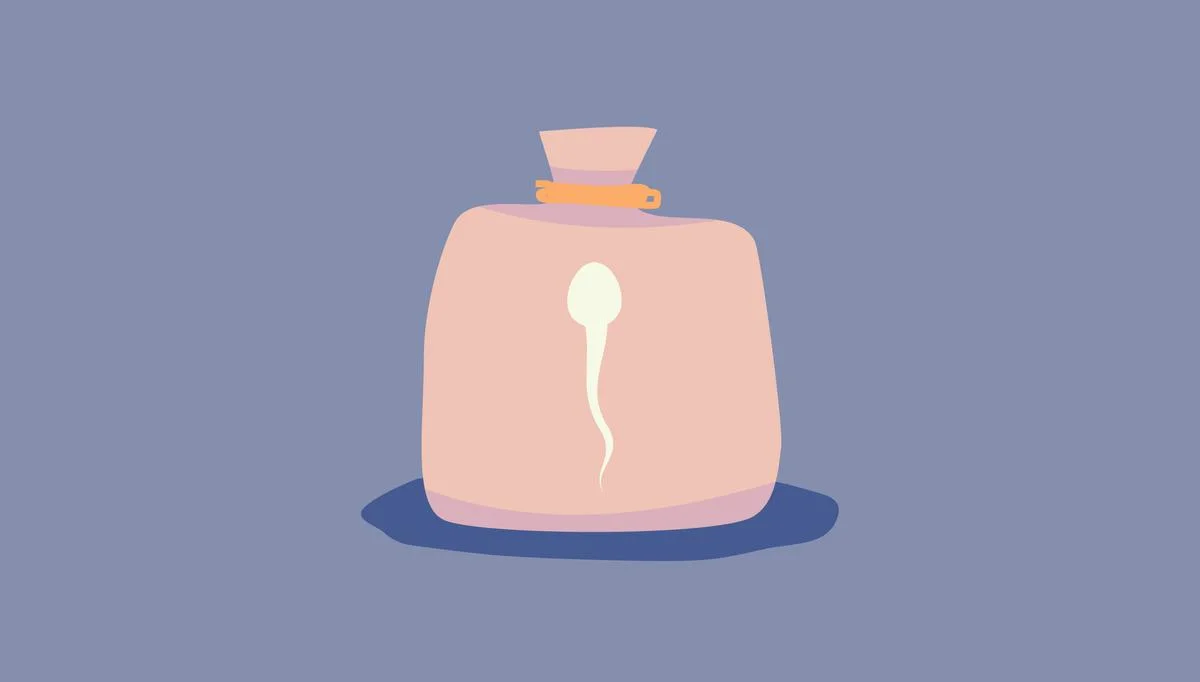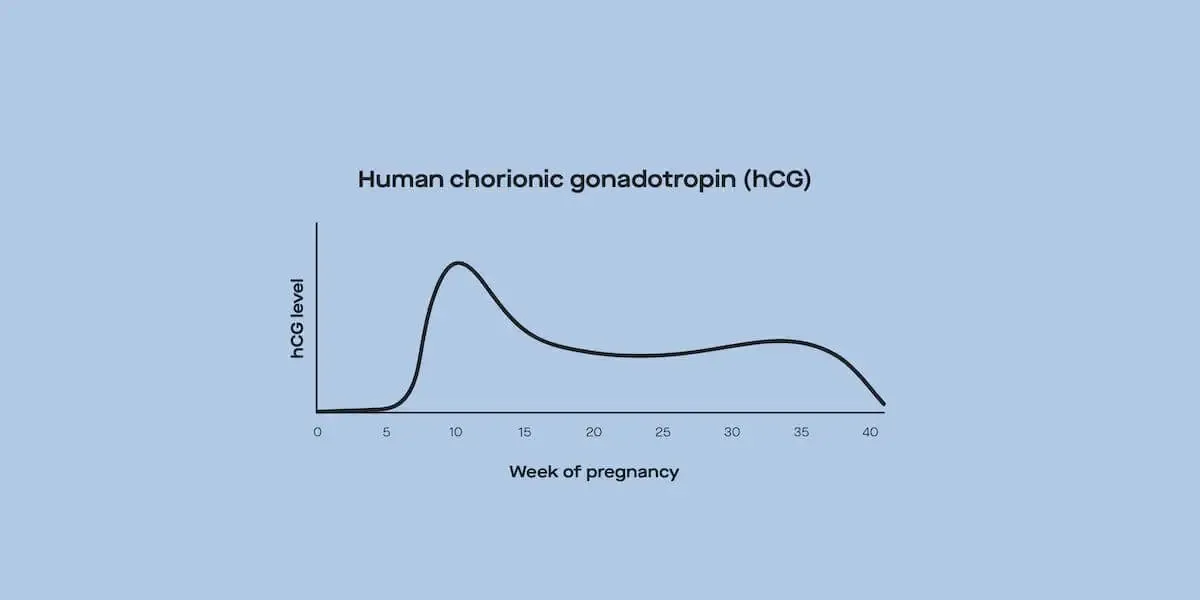Here's what we'll cover
Here's what we'll cover
Roughly 26 million Americans are diagnosed with a new STD each year. Some STDs cause no symptoms, so the true prevalence of STDs is likely even higher (Kreisel, 2021).
And if you’ve ever been diagnosed with a sexually transmitted disease—or if you haven’t, but you have fertility concerns—you may ask yourself: Can STDs cause infertility?
The answer is yes; in some cases, STDs—often referred to as sexually transmitted infections or STIs—can affect your ability to have children. While STDs can cause infertility in males, they often pose a greater threat to a woman’s fertility, especially when left untreated (Tsevat, 2018).
Let’s take a closer look at STDs and their effects on fertility.
Can STDs cause infertility?
Several STDs can cause fertility challenges in men and women. In some cases, STDs reduce fertility and make it more challenging—but not impossible—to have children. In other cases, they can cause complete and permanent infertility (Souho, 2015).
With that said, if you currently have an STD, that does not necessarily mean that you are, or will become, infertile. Still, if you’re sexually active, it’s wise to ask your healthcare provider if you would benefit from regular STD screenings. Some sexually transmitted infections don’t cause symptoms and can only be detected through a urine or blood test (Workowski, 2015).
What STDs cause infertility?
Experts have firmly established the links between certain STDs and infertility. Meanwhile, the research tying some other STDs to fertility problems is more speculative or controversial.
The STDs that can cause fertility challenges include:
Chlamydia (Chlamydia trachomatis)
Chlamydia is one of the most common STDs in the United States. It affects nearly two million people each year. However, most cases of chlamydia do not produce symptoms, so they often go undetected (Tsevat, 2018).
When chlamydia does cause symptoms, these may include (Mohseni, 2021):
Vaginal or urethra discharge
Vaginal bleeding
Abdominal pain
Pain during urination
Nausea or vomiting
Fevers
Chills
Testicle pain or tenderness
Swollen epididymis
While there’s some research linking chlamydia infections to fertility issues in men, those links are uncertain (Fode, 2016). Untreated, up to 30% of women with chlamydia may develop an infection called pelvic inflammatory disease (PID), which can cause irreversible fallopian tube damage and infertility (Tsevat, 2018).
Gonorrhea (Neisseria gonorrhoeae)
Like chlamydia, gonorrhea is common and often asymptomatic—especially in women. And like chlamydia, gonorrhea can cause infertility by harming a woman’s fallopian tubes (Tsevat, 2018). In rare cases, it can cause an inflammatory syndrome that can lead to infertility in men and women (Springer, 2021).
When gonorrhea produces symptoms, they include (Springer, 2021):
Vaginal discharge
Pain while peeing
Abdominal pain or genital tract pain
Pus discharge from the penis
Testicle pain or discomfort
Penis swelling or inflammation
The Centers for Disease Control and Prevention (CDC) recommend sexually active women younger than 25, and older women with new or multiple sex partners, get screened for chlamydia and gonorrhea (CDC, 2021).
Other STDs and infertility
The two STDs mentioned above are some of the most common in the U.S., and both are solidly linked with infertility.
When it comes to other STDs, a lot of the infertility research is shaky or controversial. For example, some work has found that the STD trichomoniasis, also known as T. vaginalis, may cause upper genital tract inflammation and other problems that are associated with reduced fertility. However, there are no strong direct links between this STD and infertility (Tsevat, 2018).
There’s also some evidence that dual STD infections, such as trichomoniasis and HIV or herpes, may lead to fertility problems (Tsevat, 2018). Some work has also found that human papillomavirus (HPV) is associated with fertility challenges (Souho, 2015). Finally, a common but not well-known STD known as Mycoplasma genitalium (or Mgen) also has some preliminary research tying it to fertility concerns (Tsevat, 2018).
But again, the relationship between these STDs and infertility is weak.
How do STDs cause infertility?
Most STDs affect female fertility by interfering with the health of the fallopian tubes, which carry fertilized eggs from the ovaries to the uterus (Tsevat, 2018).
Specifically, several STDs—including chlamydia, gonorrhea, and Mgen—can cause pelvic inflammatory disease (PID) and salpingitis, which is an infection and inflammation of the fallopian tubes. These inflammatory conditions can cause permanent damage and dysfunction to a woman’s reproductive organs and seem to be the most common causes of STD-related infertility in women.
There’s also evidence that STDs and the inflammation they cause may damage other reproductive organs or structures, including the uterus and cervix. STDs may also induce shifts in the bacterial makeup of the vagina—a.k.a., the vaginal microbiome—in ways that may contribute to fertility problems (Tsevat, 2018).
Regarding male fertility, STDs can interfere with the production, transport, or general health of sperm. However, fertility problems related to STDs seem to be far less common in men than in women (Fode, 2016).
Can STDs affect pregnancy?
Yes, if you are pregnant, sexually transmitted infections can put you and your baby at risk for preterm delivery, low birth weight, or infant death or illness. In some cases, infants can be born with the STD (Williams, 2019).
Because of these risks, many pregnant women are screened for STDs. The Centers for Disease Control and Prevention (CDC) and some other health organizations recommend that all pregnant women be tested for syphilis. Testing for chlamydia, gonorrhea, and some other STDs is also recommended for certain at-risk groups of women like those who are over 25 and have a new sexual partner (Williams, 2019).
It’s unclear how many people are affected by STD-related infertility. But it’s a fact that STDs can in some cases cause or contribute to fertility problems (Tsevat, 2018). Practicing safe sex during any kind of sexual contact, and undergoing routine screenings based on the advice of your healthcare provider, can help to prevent STDs and the fertility issues that may accompany them (Fehring, 2018).
DISCLAIMER
If you have any medical questions or concerns, please talk to your healthcare provider. The articles on Health Guide are underpinned by peer-reviewed research and information drawn from medical societies and governmental agencies. However, they are not a substitute for professional medical advice, diagnosis, or treatment.
Division of STD Prevention, National Center for HIV, Viral Hepatitis, STD, and TB Prevention, Centers for Disease Control and Prevention (CDC). (2021). Infertility & STDs . Retrieved Dec. 16, 2021 from https://www.cdc.gov/std/infertility/default.htm#infnote1
Fehring, R. J., Bouchard, T., & Meyers, M. (2018). Influence of Contraception Use on the Reproductive Health of Adolescents and Young Adults. The Linacre Quarterly , 85 (2), 167–177. doi: 10.1177/0024363918770462. Retrieved from https://core.ac.uk/download/pdf/213085961.pdf
Fode, M., Fusco, F., Lipshultz, L., & Weidner, W. (2016). Sexually Transmitted Disease and Male Infertility: A Systematic Review. European Urology Focus , 2 (4), 383–393. doi: 10.1016/j.euf.2016.08.002. Retrieved from https://www.sciencedirect.com/science/article/pii/S2405456916301109
Kreisel, K. M., Spicknall, I. H., Gargano, J. W., Lewis, F., Lewis, R. M., Markowitz, L. E., et al. (2021). Sexually Transmitted Infections Among US Women and Men: Prevalence and Incidence Estimates, 2018. Sexually Transmitted Diseases , 48 (4), 208–214. doi: 10.1097/OLQ.0000000000001355. Retrieved from https://pubmed.ncbi.nlm.nih.gov/33492089/
Kushnir, V. A. & Lewis, W. (2011). Human immunodeficiency virus/acquired immunodeficiency syndrome and infertility: emerging problems in the era of highly active antiretrovirals. Fertility and Sterility , 96 (3), 546–553. doi: 10.1016/j.fertnstert.2011.05.094. Retrieved from https://www.ncbi.nlm.nih.gov/pmc/articles/PMC3165097/
Lanao, A. E., Chakraborty, R. K., & Pearson-Shaver, A. L. (2021). Mycoplasma Infections. [Updated 2021, Aug 10]. In: StatPearls [Internet]. Retrieved from https://www.ncbi.nlm.nih.gov/books/NBK536927/
Mohseni, M., Sung, S., & Takov, V. (2021). Chlamydia. [Updated 2021, Aug 11]. In: StatPearls [Internet]. Retrieved from https://www.ncbi.nlm.nih.gov/books/NBK537286/
Souho, T., Benlemlih, M., & Bennani, B. (2015). Human papillomavirus infection and fertility alteration: a systematic review. PloS One , 10 (5), e0126936. doi: 10.1371/journal.pone.0126936. Retrieved from https://journals.plos.org/plosone/article?id=10.1371/journal.pone.0126936
Springer, C. & Salen, P. (2021). Gonorrhea. [Updated 2021, Apr 26]. In: StatPearls [Internet]. Retrieved from https://www.ncbi.nlm.nih.gov/books/NBK558903/
Tsevat, D. G., Wiesenfeld, H. C., Parks, C., & Peipert, J. F. (2017). Sexually transmitted diseases and infertility. American Journal of Obstetrics and Gynecology , 216 (1), 1–9. doi: 10.1016/j.ajog.2016.08.008. Retrieved from https://www.ncbi.nlm.nih.gov/pmc/articles/PMC5193130/
Williams, C. L., Harrison, L. L., Llata, E., Smith, R. A., & Meites, E. (2018). Sexually Transmitted Diseases Among Pregnant Women: 5 States, United States, 2009-2011. Maternal and Child Health Journal , 22 (4), 538–545. doi: 10.1007/s10995-017-2422-9. Retrieved from https://www.ncbi.nlm.nih.gov/pmc/articles/PMC5857256/
Workowski, K. A., Bolan, G. A., & Centers for Disease Control and Prevention (2015). Sexually transmitted diseases treatment guidelines, 2015. MMWR. Recommendations and Reports : Morbidity and Mortality Weekly Report. Recommendations and Reports , 64 (RR-03), 1–137. Retrieved from https://academic.oup.com/cid/article/61/suppl_8/S759/345211?login=true










